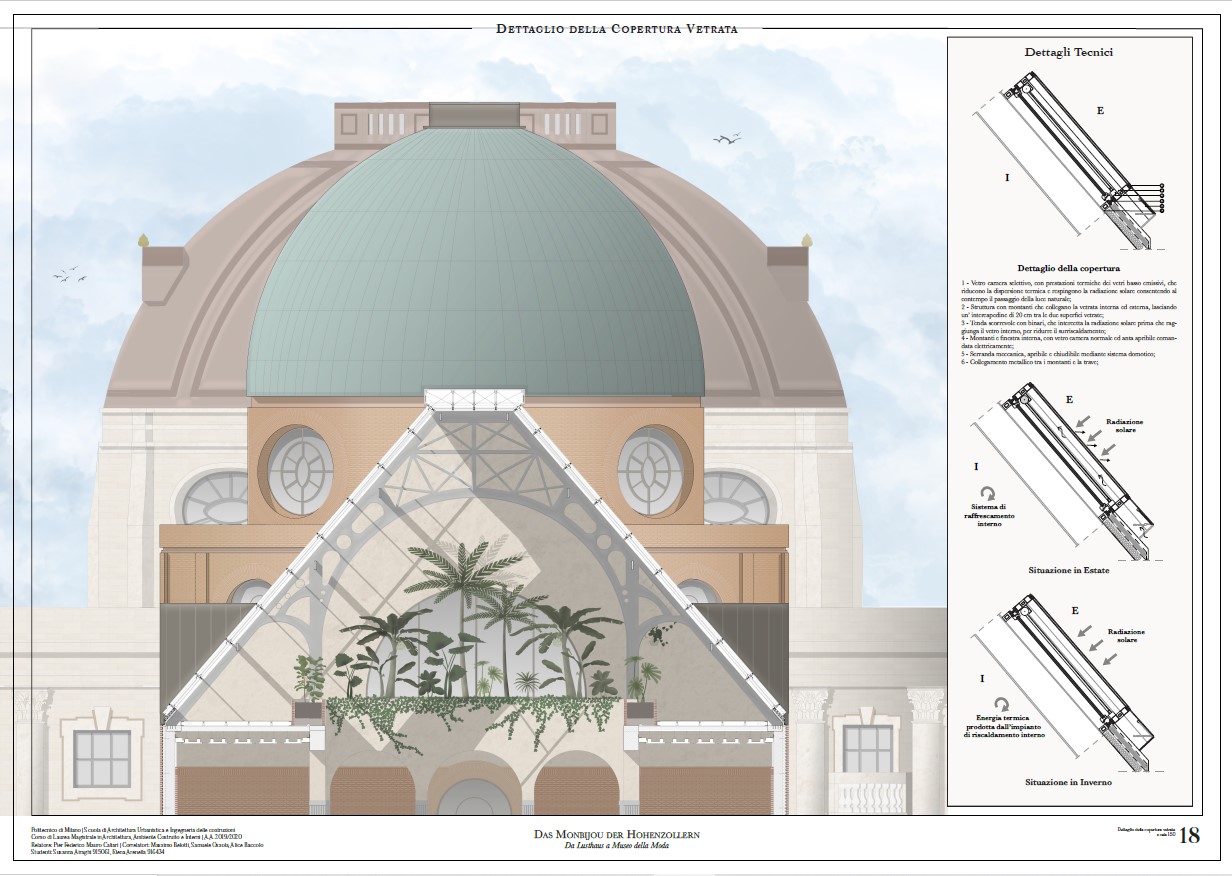Tesi di Laurea

DAS MONBIJOU DER HOHENZOLLERN.
Da Lusthaus a Museo della Moda
Candidati
Susanna Airaghi, Elena Arenella
Relatore
Pier Federico Caliari
Correlatore
Massimo Bellotti, Samuele Ossola, Alice Baccolo
Anno Accademico
2019/2020
Berlino è una città unica, segnata dalla propria storia, in cui architetture moderne si affiancano ai grandi monumenti della memoria. Tra il 1703 e il 1943 accanto all’Isola dei Musei, dall’altro lato del fiume Sprea, e poco distante dal Castello di Berlino, sorgeva lo Schloss Monbijou. Fu costruito per volere della famiglia Hohenzollern, inizialmente come residenza estiva dei principi elettori del Brandeburgo, dedicato a balli in maschera e concerti, dove venivano accolti artisti e grandi personaggi della storia. Progettato in piena età barocca, negli anni fu soggetto a cambiamenti ed aggiunte che seguivano quelli dell’architettura berlinese.
Nel 1820 divenne un museo aperto al pubblico per celebrare la famiglia reale e nel 1935 fu progettato un padiglione aggiuntivo, mai realizzato, per ospitare il Museo Prussiano, che avrebbe costituito l’accesso al grande centro culturale. I bombardamenti della Seconda Guerra Mondiale e le demolizioni della RDT privarono Berlino del loro “Bijou” e lasciarono nella città un grande vuoto. La tesi si inserisce in tale contesto, all’interno di una città che da anni sta ricostruendo sulle macerie che la storia ha lasciato, talvolta riportando alla luce i monumenti che l’hanno contraddistinta, come nel caso del Castello di Berlino. Seguendo tale logica il progetto propone la ricostruzione in stile dello Schloss Monbijou, secondo il progetto del 1742 e l’ampliamento, con l’aggiunta di spazi espositivi interrati ed un padiglione, che segua i principi del progetto mai realizzato del 1935. Lo Schloss Monbijou, ricordato per i grandi eventi e per il fasto barocco, viene restituito alla città, ponendosi come un nuovo complesso museale dedicato alla moda e allo sviluppo del fashion design tedesco.
.
Berlin is a unique city, marked by its own history, in which modern architectures combine with impressive memorial monuments.
Between 1703 and 1943, the Schloss Monbijou stood near Museum Island, on the other side of the Spree river and not far from Berlin Palace. It was built at the request of the Hohenzollern family, at the beginning as a summer residence of the prince-electors of Brandenburg, dedicated to masked balls and concerts, where artists and great personalities of history were hosted. Designed in the middle of the Baroque age, over the years it was subject to changes and interventions in line with the architectural style of Berlin.
In 1820, it became a museum open to the public, to celebrate the royal family and in 1935 an additional pavilion, never built, was designed to host the Prussian Museum, which would have provided access to the great cultural center.
The bombings of the Second World War and the demolitions of the GDR deprived Berlin of its “Bijou” and left a great void in the city. The thesis should be seen in this context, within a city that has been rebuilding for years on the ruins that history has left, sometimes bringing to light its distinctive monuments, as in the case of Berlin Palace. On the basis of such reasoning, the project proposes the reconstruction of the Schloss Monbijou, according to the project dating back to 1742 and its expansion, with the addition of underground exhibition spaces and a pavilion consistent with the principles of the project never realized in 1935. The Schloss Monbijou, remembered for the great events and the baroque splendor, is returned to the city as a new museum complex dedicated to fashion and the development of German fashion design.





















